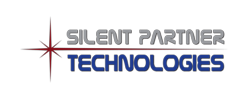 RFID Applications Evolution and Solutions. Radio frequency identification (RFID) comes under the category of automatic identification technologies. This technology uses radio waves to transmit data from an RFID tag that is attached to an object. The information obtained can be read from a large distance away and beyond the line of sight. RFID technologies are being increasingly used these days. RFID data can be read through clothing and human body and non-metallic materials.
RFID Applications Evolution and Solutions. Radio frequency identification (RFID) comes under the category of automatic identification technologies. This technology uses radio waves to transmit data from an RFID tag that is attached to an object. The information obtained can be read from a large distance away and beyond the line of sight. RFID technologies are being increasingly used these days. RFID data can be read through clothing and human body and non-metallic materials.
The components of a basic RFID system are a tag or a transponder, the reader, and the computer and integrated software set-up. The reader sends a radio signal to activate the tag and read and write data into it. The reader’s signal range can be 1 inch to a hundred feet or more. This range depends on the power output of the reader and the frequency of the signal. If the tag passes through this electromagnetic zone, it reads the reader’s activation signal. The reader then decodes the data that is embedded in the silicon chip of the tag and sends it to the computer set-up for further processing.
The RFID tag is basically a microchip attached to an RFID antenna mounted on a substrate. The data from the tag serves to inform the location or other specifics about the entity that is tagged. The data is processed according to the application that requires the data.
RFID technology is being popularly used for more than a decade now. The technology is being used by thousands of companies for different applications. The technology gained popularity because it could be used to track moving objects. Short range and long range are two major application areas where the technology is currently being used.
In the Vicinity or the long range applications, it is mainly tracking and tracing. In the Proximity or short range, it is mainly access control. Governmental departments, and private organizations and corporations use this technology to track people, assets, and documents. The location of tagged assets is known instantaneously.
They are used in libraries and healthcare facilities for asset management. The time saved on searching for lost unaccounted items is tremendous. The financial and impact is also immense. Many companies are offering turnkey solutions in the areas of waste management and recycling, animal tracking, product authentication, etc. One popular use of RFID application is to pay the toll booths without stopping on the highways. This is being adopted by drive in restaurants where customers can pay for the meals that they collect.
Supply chain management is yet another RFID application that major retail giants have adopted. It helps them to maintain optimal inventory, out-of-stock losses are kept to a minimum, shoplifting can be cut down to a large extent and customers can cruise out through the check-out lines in minimum time.
The RFID technology has been used for long to limit physical access to restricted areas in commercial and office buildings. Earlier low-frequency systems were in vogue. But now there are higher frequency systems that offer better range. An RFID tag worn by the entrant can identify and authenticate. There is no contact, no magnetic card swipe, and consequently less maintenance. This technology is being combined with biometrics to enhance the security.
As RFID applications are becoming more popular and reliable, the associated costs are reducing. There is every chance that new areas in which they can be used effectively will soon emerge.


